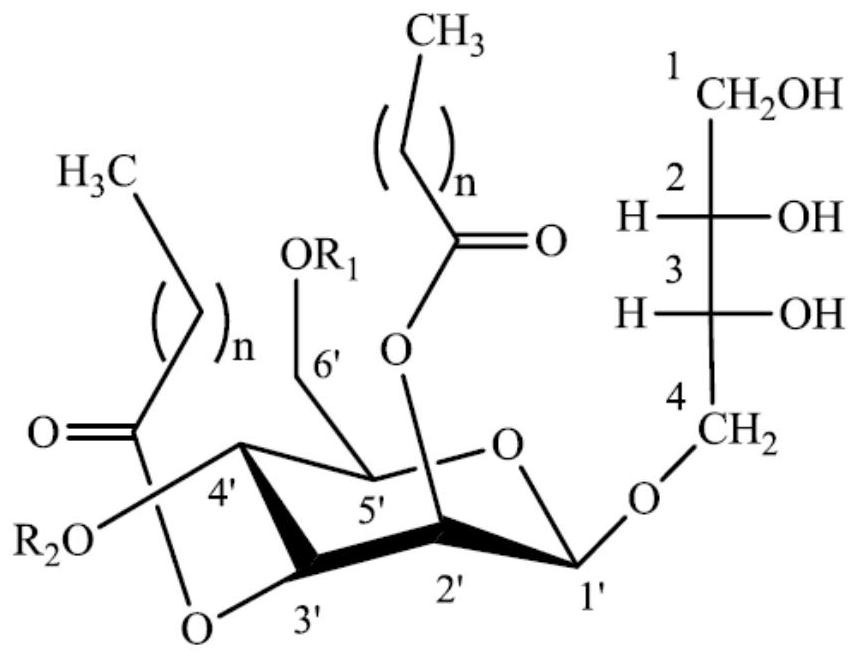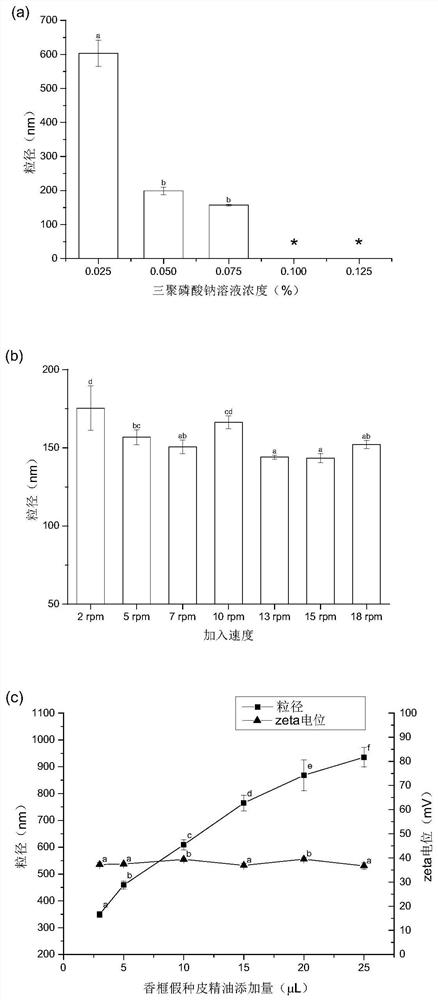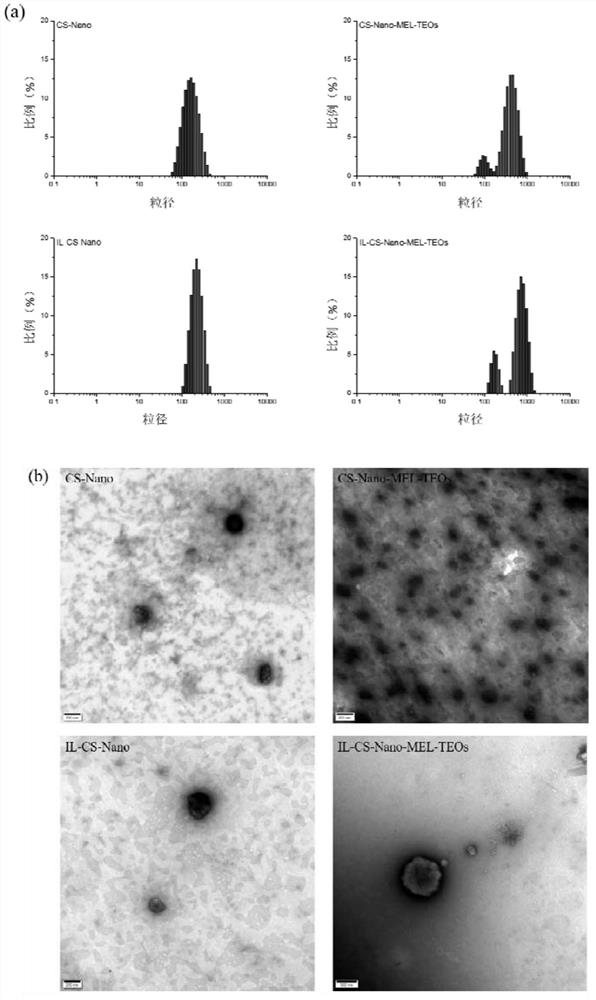A plant essential oil shell pool nano -microcapsule and its preparation methods and applications
A technology of chitosan nano and plant essential oils, which is applied in the direction of microcapsule preparation, microsphere preparation, essential oils/fragrances, etc., can solve the shortage of plant essential oils, the inability to fully reflect the economic value of plant essential oils, and the low utilization efficiency of plant essential oils, etc. problems, to achieve the effect of improving economic value, overcoming odor stimulation, and prolonging the effect time
- Summary
- Abstract
- Description
- Claims
- Application Information
AI Technical Summary
Problems solved by technology
Method used
Image
Examples
Embodiment 1
[0046] Embodiment 1 Preparation of nano-microcapsules
[0047] 1. Preparation of nano-microcapsule materials
[0048] 1. Production and purification of mannose erythritol lipid
[0049] Mannose erythritol lipid was produced by Pseudozyma aphidis DSM70725 (purchased from German Collection of Microorganisms and Cells). The production and purification method of type A mannose erythritol lipid (MEL-A): first inoculate Torulopsis aphids into the activation culture containing 3% yeast extract, 3% malt extract, 10% glucose and 5% peptone Medium, and cultivated at 28°C and 180rpm for 36 hours. After activation, inoculate 1mL of bacterial culture into NaNO 3 3g / L, MgSO 4 ·7H 2 O 0.3g / L, KH 2 PO 4 Seed medium composed of 0.3g / L, yeast extract 1g / L, glucose 40g / L and distilled water. After 2 days of cultivation at 28°C and 180 rpm, the seed culture was centrifuged and washed twice with saline. The resulting cells were inoculated in 80 mL / L soybean oil containing MgSO 4 ·7H 2...
Embodiment 2
[0058] Embodiment 2 Characterization of nano-microcapsules
[0059] 1. Characterization of physical and chemical properties of nano-microcapsules
[0060] Particle size distribution and zeta potential:
[0061] The particle size distribution, dispersion index and zeta potential of the nanocapsules were determined by dynamic light scattering (DLS) at a wavelength of 633 nm adapted to a Zetasizer Nano ZS90 (Malvern Instruments Ltd, Malvern, UK). The temperature was set at 25°C, and the measurement angle was 90°.
[0062] from figure 2 In a, we can see that when the concentration of sodium tripolyphosphate is lower than 0.075%, the particle size of empty nano-microcapsules decreases with the increase of sodium tripolyphosphate concentration, and the minimum is 157.4±2.2nm at 0.075%. When the concentration of sodium tripolyphosphate is further increased, the sample becomes unstable and settles rapidly.
[0063] The concentration of sodium tripolyphosphate was determined to be...
PUM
| Property | Measurement | Unit |
|---|---|---|
| molecular weight | aaaaa | aaaaa |
| molecular weight | aaaaa | aaaaa |
| molecular weight | aaaaa | aaaaa |
Abstract
Description
Claims
Application Information
 Login to View More
Login to View More - R&D
- Intellectual Property
- Life Sciences
- Materials
- Tech Scout
- Unparalleled Data Quality
- Higher Quality Content
- 60% Fewer Hallucinations
Browse by: Latest US Patents, China's latest patents, Technical Efficacy Thesaurus, Application Domain, Technology Topic, Popular Technical Reports.
© 2025 PatSnap. All rights reserved.Legal|Privacy policy|Modern Slavery Act Transparency Statement|Sitemap|About US| Contact US: help@patsnap.com



